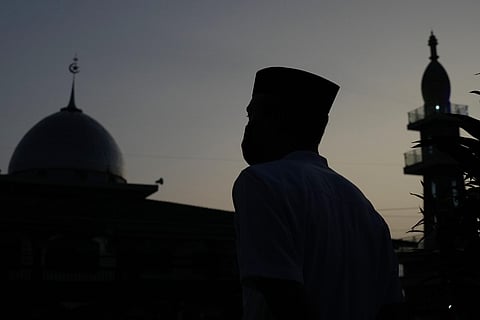

KOZHIKODE: As part of encouraging regional varieties of Islam and to prevent the religion from being perceived as a monolithic one, The World Muslim Communities Council in the UAE has brought out a book titled Theology, Jurisprudence and Syncretic Traditions: Indianisation of Islam.
The book seeks to ‘demonstrate a unique perspective of indigenisation of Islamic faith’ in the backdrop of the discussions on ‘Arabisation’ of the religion that is being projected as the ‘true’ representation of Islam.
“There are some issues in promoting Arab culture as Islamic and presenting Islam as mono-centric,” said the Council’s senior researcher Dr Abbas Panakkal.
The book contains articles by Dr Sebastian R Prange of University of British Columbia, Vancouver, Dr Moin Ahmad Nizami of Oxford University and Dr Faizan Mustafa of NALSAR University of Law, Hyderabad.
Prange has coined the term, Monsoon Islam, to denote the particular variety of the religion that was spread through the Arab traders who travelled to South Asia following the direction of the monsoon winds.
Indian Islamic model can serve as a good example: Muslim Council
The ordinary traders who promoted Islam were “neither representatives of state power nor recognised religious authorities.” The Islam that was developed outside the Muslim heartlands maintained the core of the religion while assimilating the local culture. Prange says the mosques along the Malabar coast are living examples of the synthesis of Hindu and Muslim architecture.
He also quotes the ‘cross-communal worship’ of both Hindus and Muslims at certain shrines in south India as another sign of the syncretic culture. In his article, Dr Mustafa says how the Muslim rulers promoted the cultural synthesis by allowing grants to temples, banning cow slaughter and placing Hindus in crucial posts. He said according to Chach Nama, the historical account, Muslims treated Hindus as ‘People of the Book’ along with Christians and Jews.
Some Muslim rulers even engraved the figures of Goddess Lakshmi and the bull of Lord Shiva on their coins, he said. The Abu Dhabi-based Council, which promotes integration of Muslims with non-Muslim majority countries, feels that the Indian model ‘can serve as a good example for many Muslim communities worldwide.’
The initiative assumes wider significance in Kerala where there is a line of thinking that Islam imported from the Arabian countries is the authoritative religion and there is a tendency to look down upon the local varieties of the religion. A book on ‘Gulf Salafism’ and its impact on Mujahid movement in Kerala, written around two decades ago, had triggered widespread discussion in the state.